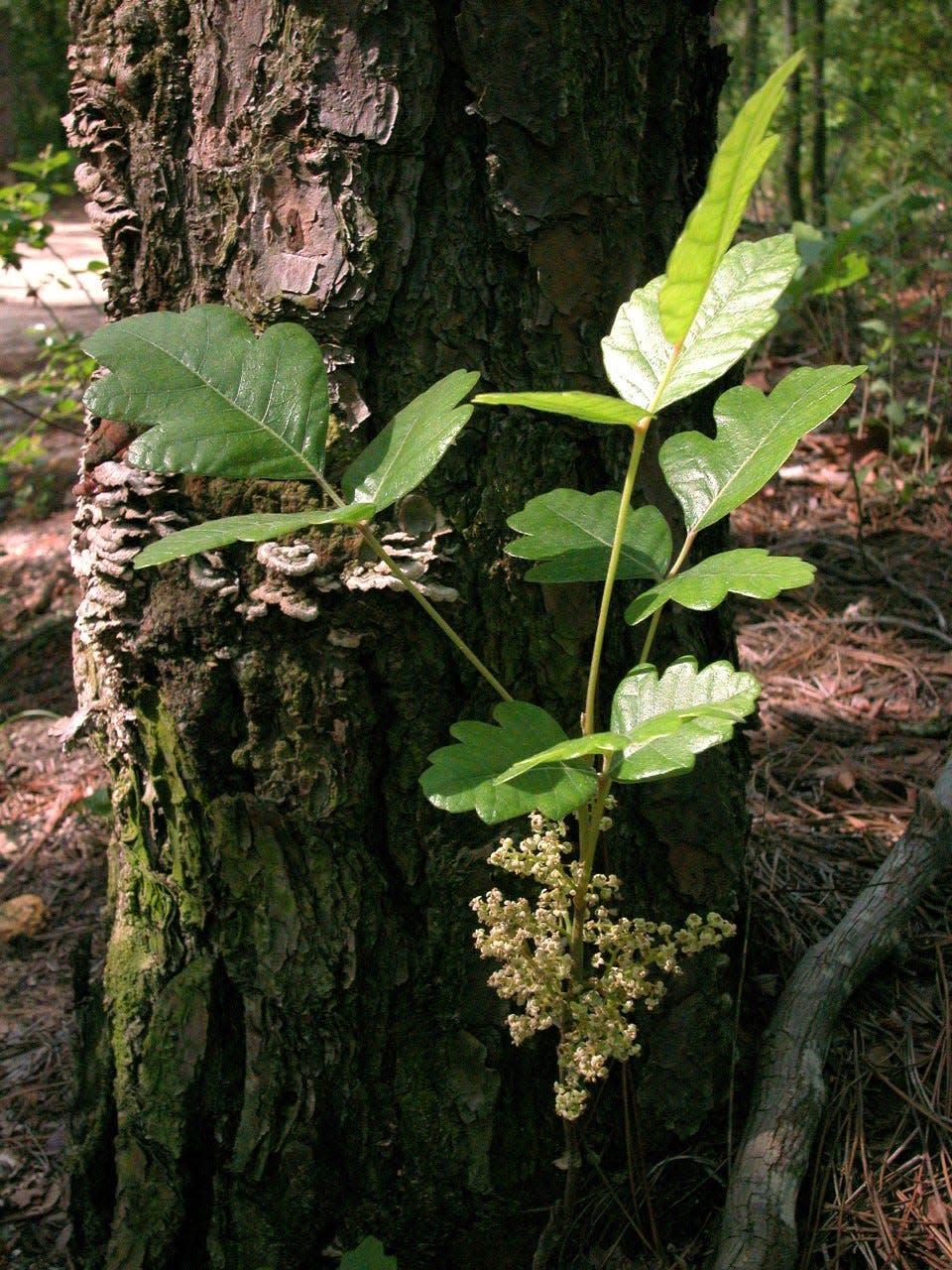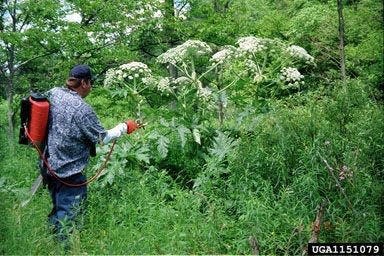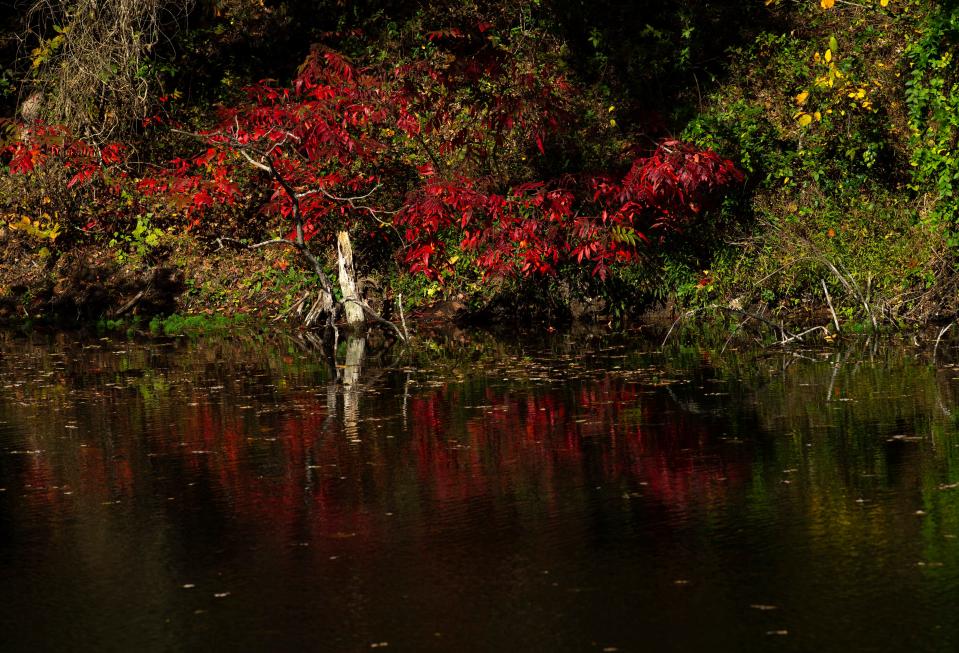Watch out for these 5 poisonous plants in RI: How to ID and symptoms to watch for
With the first greens of spring starting to peak out, it’s time to start thinking about poisonous plants once again.
There are many ways to think about what makes a plant poisonous — poisonous to touch or ingest, to humans or animals, in what quantity — but for this article, we’re talking specifically about plants that are poisonous to come into contact with, without ingesting them. Think poison ivy.
Here are five plants to be on the lookout for while enjoying nature, and some tips to avoid an unpleasant experience. This list has been compiled with help from the Rhode Island Department of Environmental Management and Dr. David Gregg from the Rhode Island Natural History Survey.
As always, if you are experiencing symptoms and need medical attention, talk to your doctor.
Poison Ivy
Likely the most well-known of all the poisonous plants, poison ivy can be found throughout Rhode Island. The oily resin in its leaves, stem and roots, called urushiol, is what makes it toxic.
How to identify poison ivy: Leaves of three, leave it be is how the old adage goes. Beyond that, the leaves are almond-shaped and can have smooth or serrated edges that end in a pointed tip. The leaves can be shiny or dull, and in the autumn red. The stem is typically hairy. It can grow as either a vine or a shrub.

What to do if you think you’ve touched poison ivy: It’s the plant's oils that make it toxic, so the first step is to try to wash it off with soap and cold water as soon as possible. The Center for Disease Control recommends using rubbing alcohol, poison plant washes, degreasing soap or detergent with lots of water, and rinsing often.
If you can’t wash it off in time and do end up with symptoms, the University of Rhode Island Health Services recommends soothing treatments, such as oatmeal baths or calamine lotion.
If the symptoms are severe, see a medical provider.
Gardening:Once considered weeds, these 7 plants are garden beauties – and good for the ecosystem
Symptoms: Poison Ivy causes an itchy rash, which can include redness, itching, swelling, blisters, and in extreme cases, difficulty breathing, according to the Mayo Clinic.
Giant Hogweed
An invasive plant in Rhode Island, Giant Hogweed packs a serious punch, which can include second-degree burns and discoloration that can last for a year or more. If you spot this plant, the Rhode Island Department of Environmental Management requests you contact them to have it removed. It can be found growing by roadsides, in ravines, along rivers, railroad lines, and streams as well as in barnyards or vacant lots.
How to recognize it: This plant grows up to 15 feet tall, and flowers a white umbel style bloom (think Queen Anne’s Lace) after the second year of growth. It has a thick stem with purple splotches and green, deeply incised leaves that grow as three leaflets and can be three to five feet wide.

What to do if you come into contact with Giant Hogweed: Wash the impacted area with soap and water immediately. The clear, watery sap that causes the symptoms of Giant Hogweed exposure increases your sensitivity to sunlight, so cover the skin to keep it out of the light for 48 hours. Treat it as a surface burn.
What are the symptoms of Giant Hogweed: This plant can cause second-degree burns, itchiness, swelling; blisters that persist for days to months, purple, brown, or black pigmentation of the skin that can last for a year or more, recurring skin problems, and scarring, according to DEM. It has also been documented to cause temporary or permanent blindness, which has been documented in children who were using the hollow stems as telescopes or peashooters.
Henry Homeyer: Bring spring indoors by forcing woody stems to bloom
Poison Sumac
This small tree is found in very wet sites, like deep in swamps, and therefore isn’t something people come across often. In the fall, the leaves turn bright red.
How to recognize it: Poison sumac has a reddish stem and has leaves that are arranged in pairs of 7 to 13 elongated leaflets with a single leaf at the end. The leaves are bright orange in the spring, green and glossy in the summer and then red in the fall.

What to do if you come in contact with Poison Sumac: This plant has a similar oil in it to the one in poison ivy, so wash it off with soap and cold water. Take care to wash under your fingernails carefully.
What are the symptoms of Poison Sumac: It causes itchiness, a burning sensation on the skin, redness, swelling and watery blisters.
Stinging Nettle
This little plant has medicinal uses, but, as the name suggests, also packs a sting. There is both a native and nonnative subspecies of this plant in Rhode Island, and it’s typically found growing in disturbed ground, such as farm or field edges, growing in patches. Also worth knowing, it’s the food plant for red admiral butterflies.
How to recognize stinging nettle: It has simple green leaves that grow in an oval shape with a serrated edge. The prickly leaves grow directly opposite each other. They grow on a wire, square-shaped stem that has hairs on it.
Ticks in RI:This winter was warm. Does that mean more ticks will be lurking in RI this year?
What to do if you touch stinging nettle: When you touch the hairs of a stinging nettle plant, a rash is likely to start appearing. Healthline recommends not touching the hairs for the first 10 minutes to give them a chance to dry out and make the nettles easier to remove. Once you’ve done that wash your hands with soap and water.
The Army Public Health Center recommends applying calamine lotion to the rash or topical corticosteroid creams.
What are the symptoms of stinging nettle: Stinging nettle can cause swelling, redness, a stinging or tingling sensation, numbness and itching.
Wild Parsnip
A non-native but naturalized plant in Rhode Island, this plant is a member of the carrot family and it can cause skin irritation to people who are sensitive. Also in the family, the above-mentioned Giant Hogweed, and cow parsnip, Queen Anne’s Lace and water hemlock.
How to recognize wild parsnip: Wild parsnip looks a lot like Queen Anne’s Lace, but it has yellow blossoms that are arranged in flat umbel flowers at the top of the stem. It can be 24 to 60 inches tall.
What to do if you touch wild parsnips: The sap from wild parsnip makes skin photosensitive. If you come into contact with it, wash the area with soap and water and keep it covered and away from light for at least 48 hours to prevent a reaction.
What are the symptoms of wild parsnip: The sap of wild parsnip can cause burns in the presence of sunlight, according to the Vermont Health and Environment Department. It can cause second-degree burns, rashes and raised blisters.
This article originally appeared on The Providence Journal: 5 poisonous plants in Rhode Island: What to know

